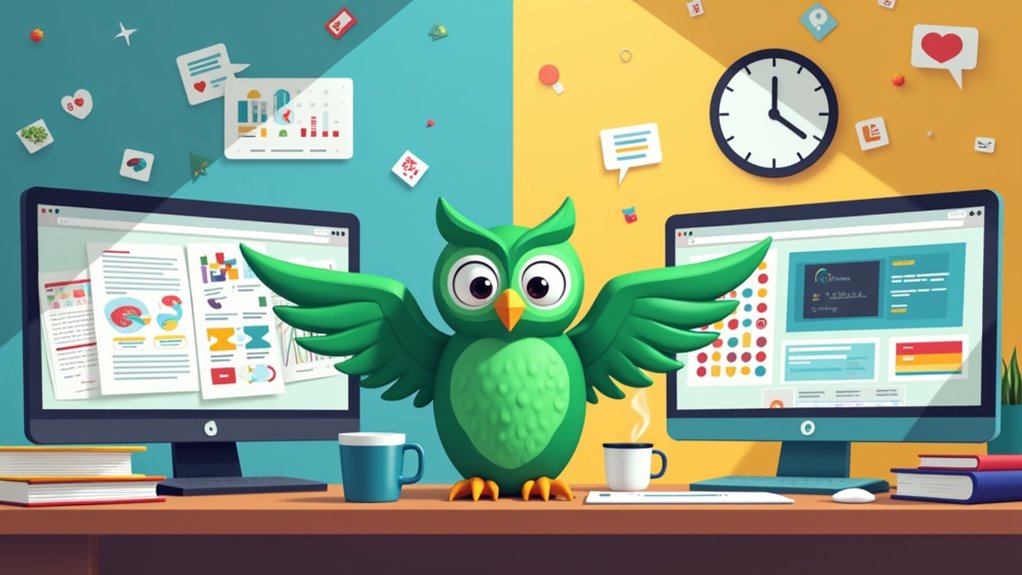Duolingo has doubled its language offerings in under a year using AI, launching 148 new courses—a feat that previously took 12 years. The language learning app’s “AI-first” approach has dramatically reduced development time from years to months. Meanwhile, contractors who created course content are being shown the door, with humans now relegated to validating AI-generated materials. Users aren’t exactly thrilled, reporting inaccuracies that might make you say “¿Qué?” in any language.
Duolingo has supercharged its platform with artificial intelligence, launching a staggering 148 new language courses in less than a year. The language learning giant has effectively doubled its total course offerings—a feat that previously took them a whopping 12 years to accomplish. Talk about a productivity glow-up.
This AI revolution represents Duolingo‘s largest content expansion ever, prioritizing beginner-friendly proficiency levels while including interactive features like Stories for reading comprehension and DuoRadio for listening practice. The company promises advanced content is coming soon, so don’t worry if you’re already beyond asking “Where is the bathroom?” in sixteen languages.
The expansion strategically targets popular Asian languages, including Japanese, Korean, and Mandarin. Latin American users can now access these courses, while fifteen European language speakers also gain entry to the Asian language lineup. This type of expansion aligns with the global AI market projected to reach $1.85 trillion by 2030.
Previously underserved regions suddenly have a language buffet at their fingertips.
The digital language revolution transforms educational deserts into linguistic oases overnight.
But this AI miracle comes with a human cost. Internal communications reveal Duolingo plans to “gradually stop using contractors to do work that AI can handle.” Contractors who once created course content are being shown the door as algorithms take their place. Human expertise has been redirected to merely validating what the machines produce. *Cue dystopian soundtrack.*
The backlash has been swift. Social media is ablaze with complaints about inaccuracies and quality issues in the AI-generated content. Some users report deleting the app entirely, encouraging others to join their digital protest. CEO Luis von Ahn maintains that manual content creation simply isn’t scalable for achieving the company’s educational mission.
Duolingo defends its “AI-first” strategy as necessary to efficiently serve millions of learners, reducing development time from years to months. The company insists it maintains rigorous quality standards despite the automation push.
The question remains whether Duolingo’s sprint toward expansion balances educational quality with corporate growth. One thing’s certain—as the green owl flies faster than ever, it’s leaving some human nest-builders behind.









